C. calceolus or Lady's Slipper Orchid as it is commonly known was first described from Germany in 1753. It
is a very special plant, its form, stature and sheer
beauty mark it out out as arguably Europe's most impressive orchid
though unfortunately its irresistible elegance is the very thing
that creates the biggest challenge to its survival.
In the sub Alpine regions of Europe, the blooms are frequently included in picked flower arrangements and although this is to be regretted, it presents nothing like the problem faced by plants trying to survive in Britain. Where our continental colleagues largely seem content to leave wild plants growing where they look their best, there seems in this country to be a legacy of the aquisitive collecting culture of our Victorian forbears. Despite the availability of commercial seed and plants, there still exists a band of "enthusiasts" who feel an overwhelming urge to remove as many wild species as possible to the captivity and obscurity of their own gardens.
C. calceolus needs little description and its history in the UK is well known but for those wishing to see truly wild plants for themselves they can do little better than visit the Vercors in early June and concentrate their efforts around the Col de Rousset or Col de Menee areas where it can still be found relatively easily and occasionally even on shady roadside banks. This species seldom grows in full sun but favours light shading and is frequently found in damp conditions sometimes even in the margins of bogs.
The pictures here were taken on the 5th and 6th of June and are all from the previously mentioned areas of Southern France.
In the sub Alpine regions of Europe, the blooms are frequently included in picked flower arrangements and although this is to be regretted, it presents nothing like the problem faced by plants trying to survive in Britain. Where our continental colleagues largely seem content to leave wild plants growing where they look their best, there seems in this country to be a legacy of the aquisitive collecting culture of our Victorian forbears. Despite the availability of commercial seed and plants, there still exists a band of "enthusiasts" who feel an overwhelming urge to remove as many wild species as possible to the captivity and obscurity of their own gardens.
C. calceolus needs little description and its history in the UK is well known but for those wishing to see truly wild plants for themselves they can do little better than visit the Vercors in early June and concentrate their efforts around the Col de Rousset or Col de Menee areas where it can still be found relatively easily and occasionally even on shady roadside banks. This species seldom grows in full sun but favours light shading and is frequently found in damp conditions sometimes even in the margins of bogs.
The pictures here were taken on the 5th and 6th of June and are all from the previously mentioned areas of Southern France.
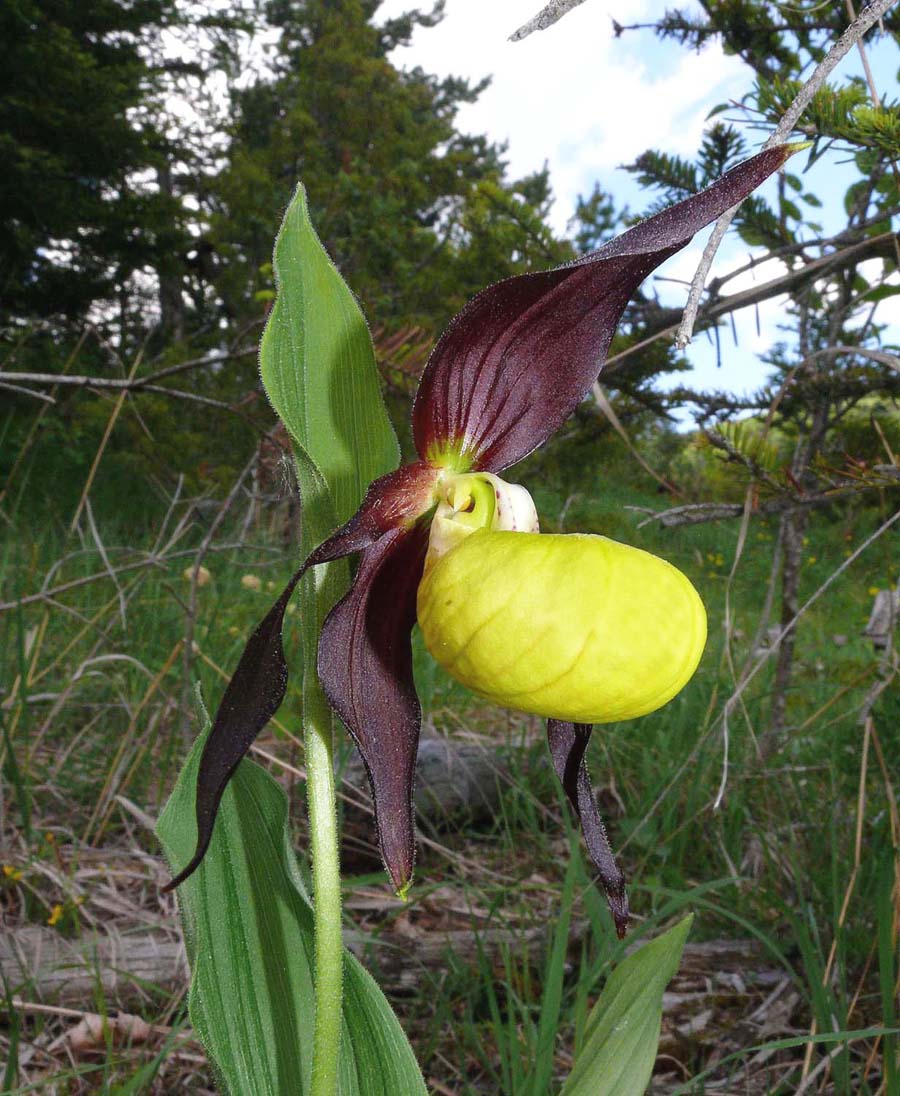
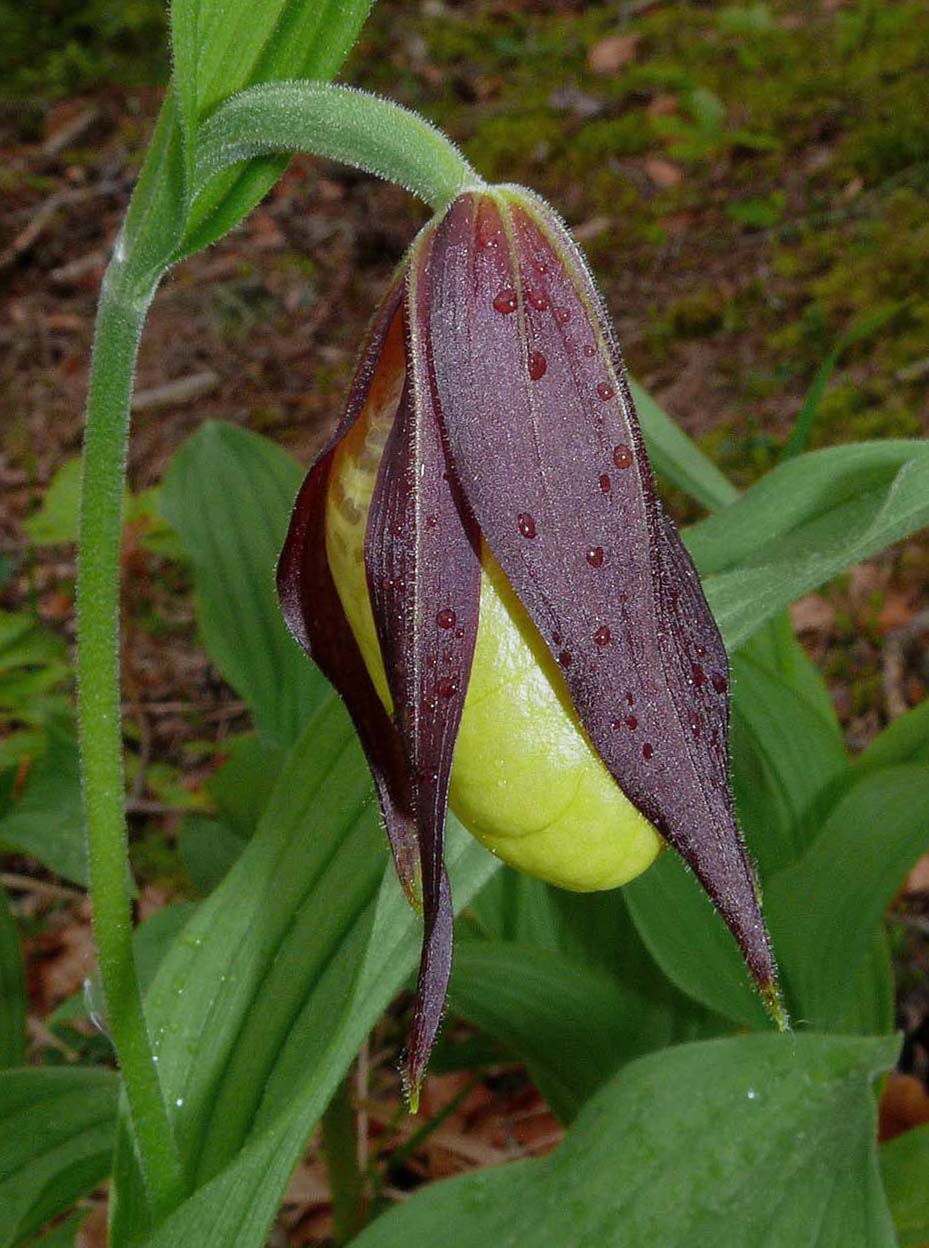
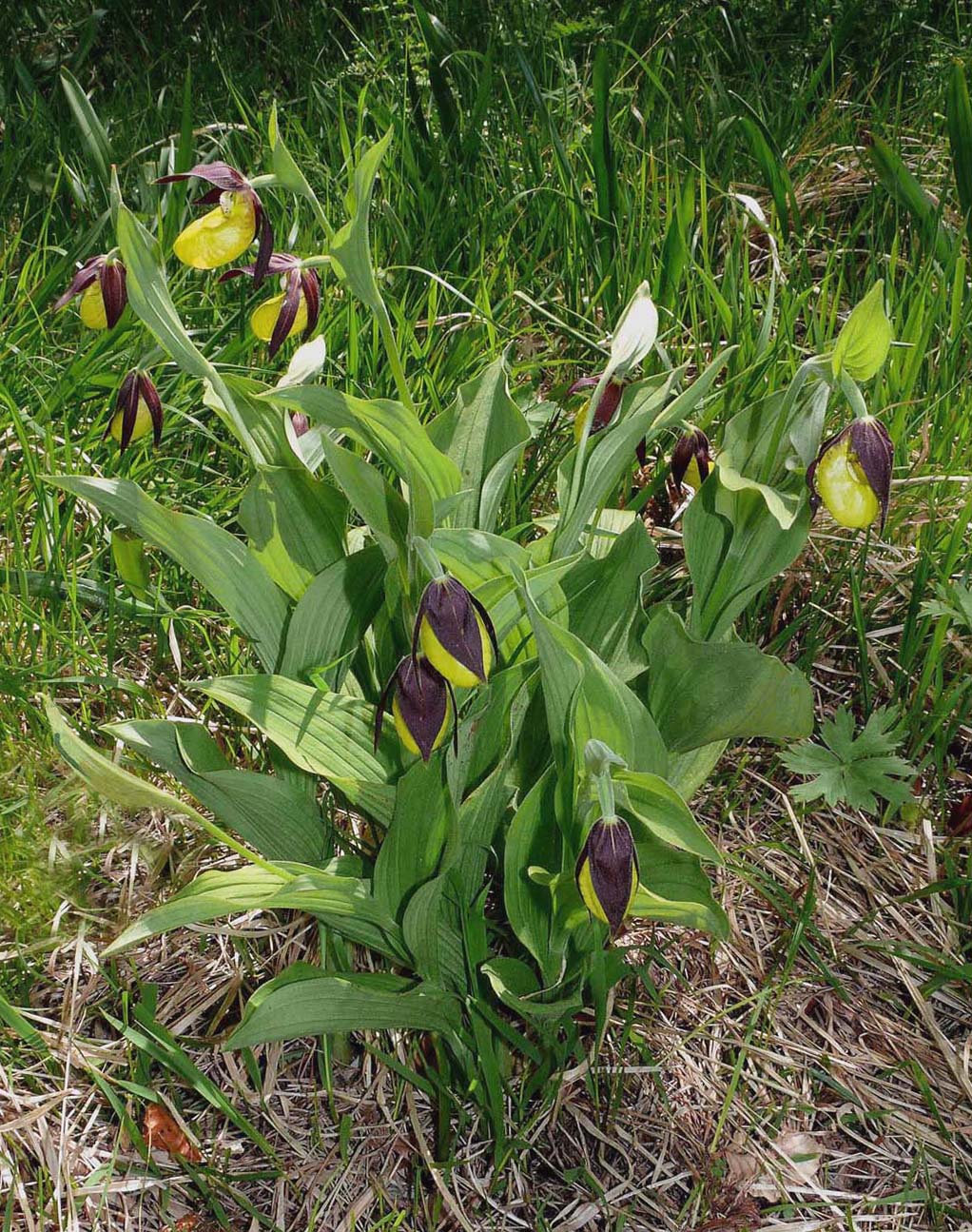
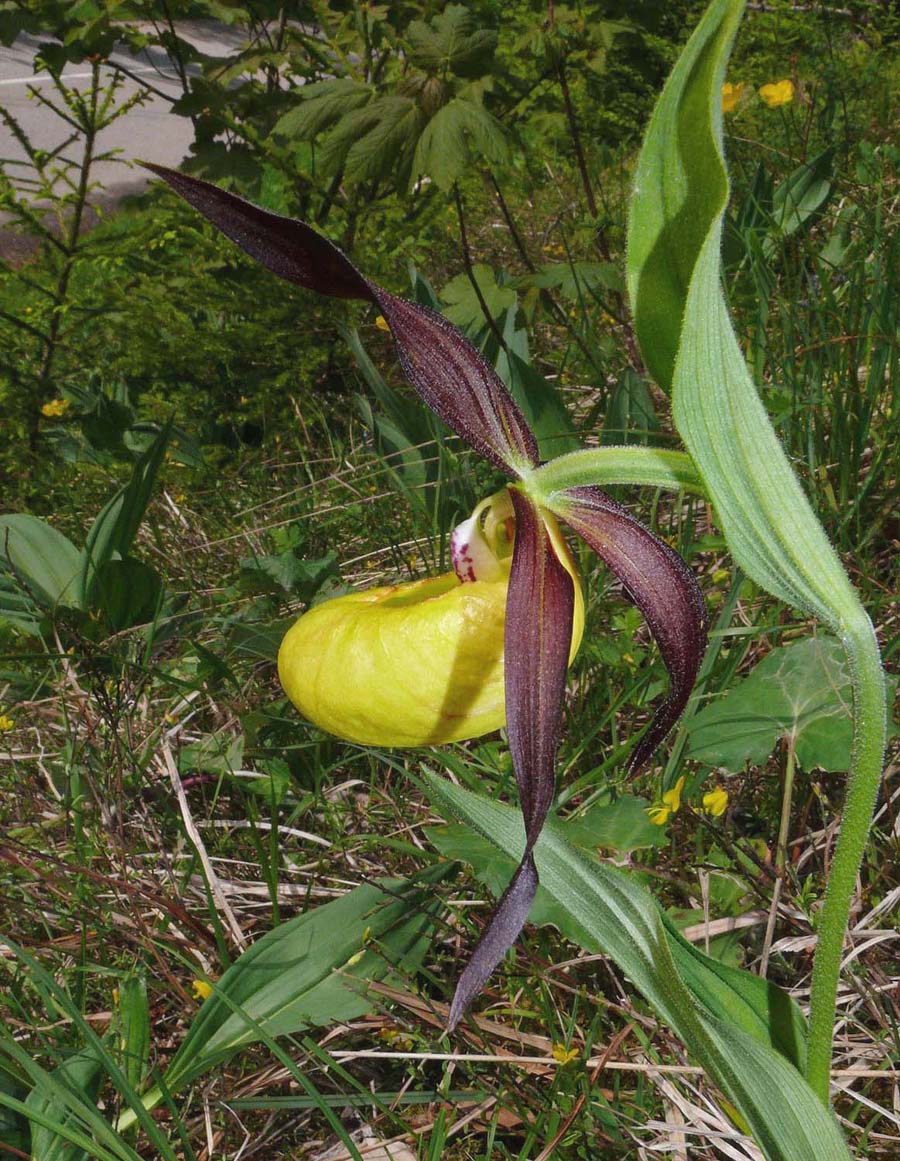
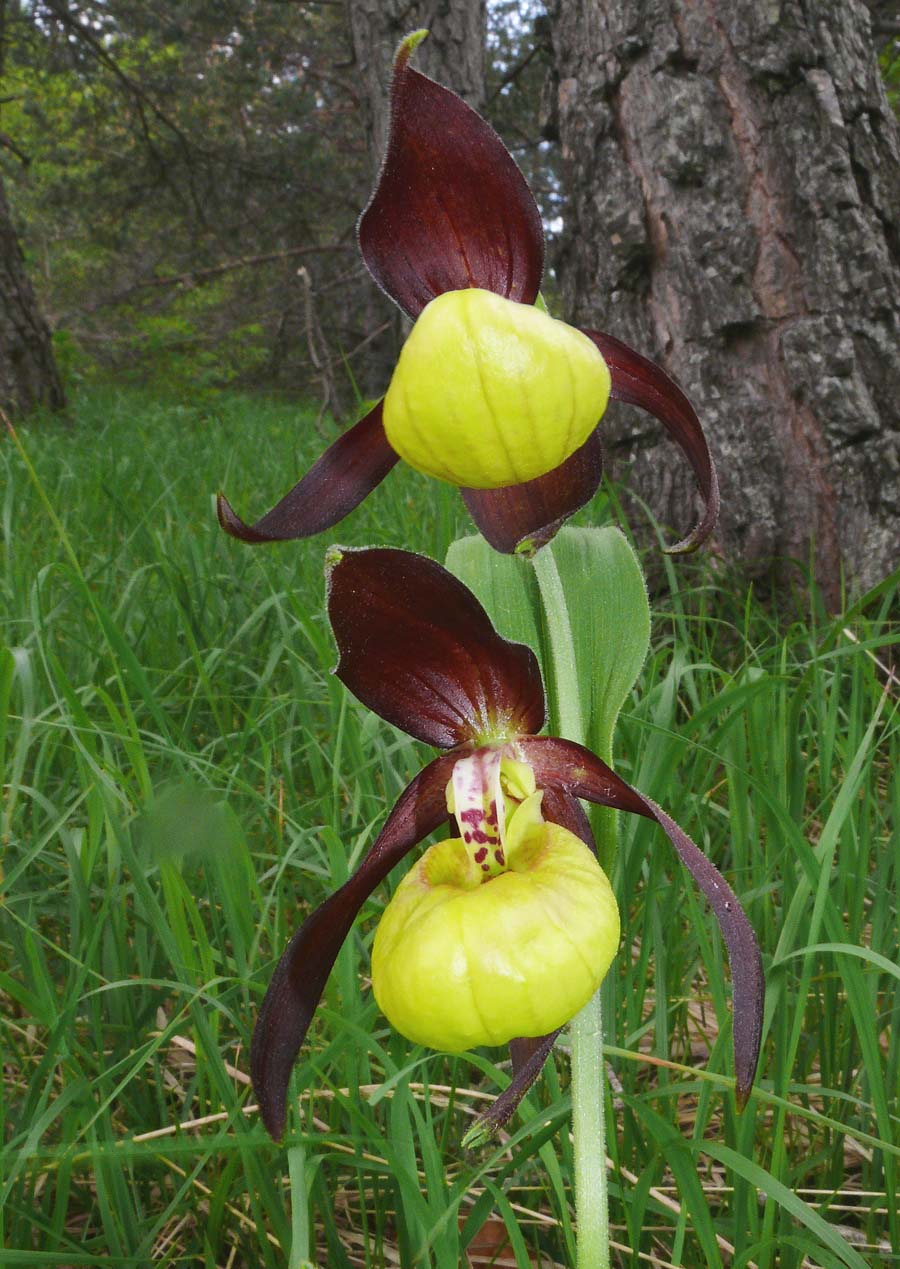
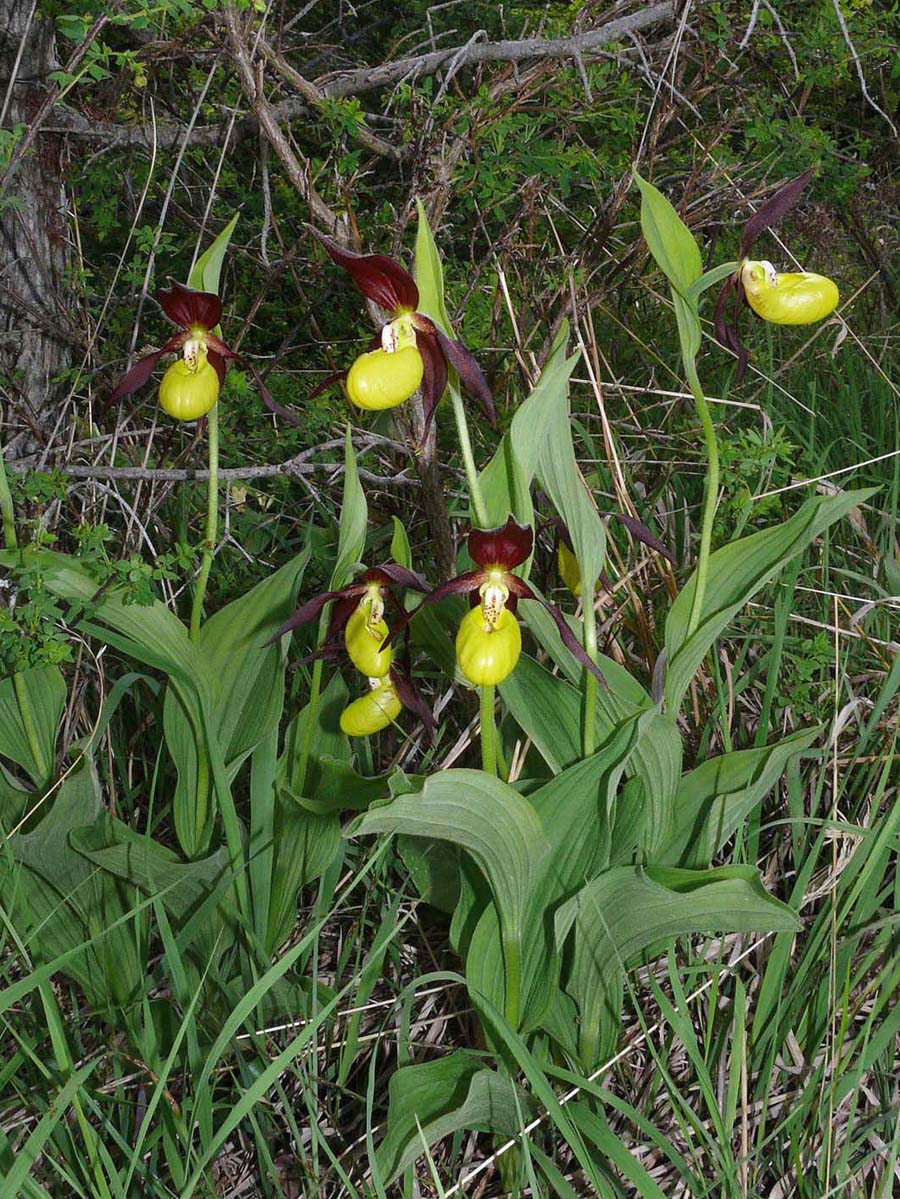
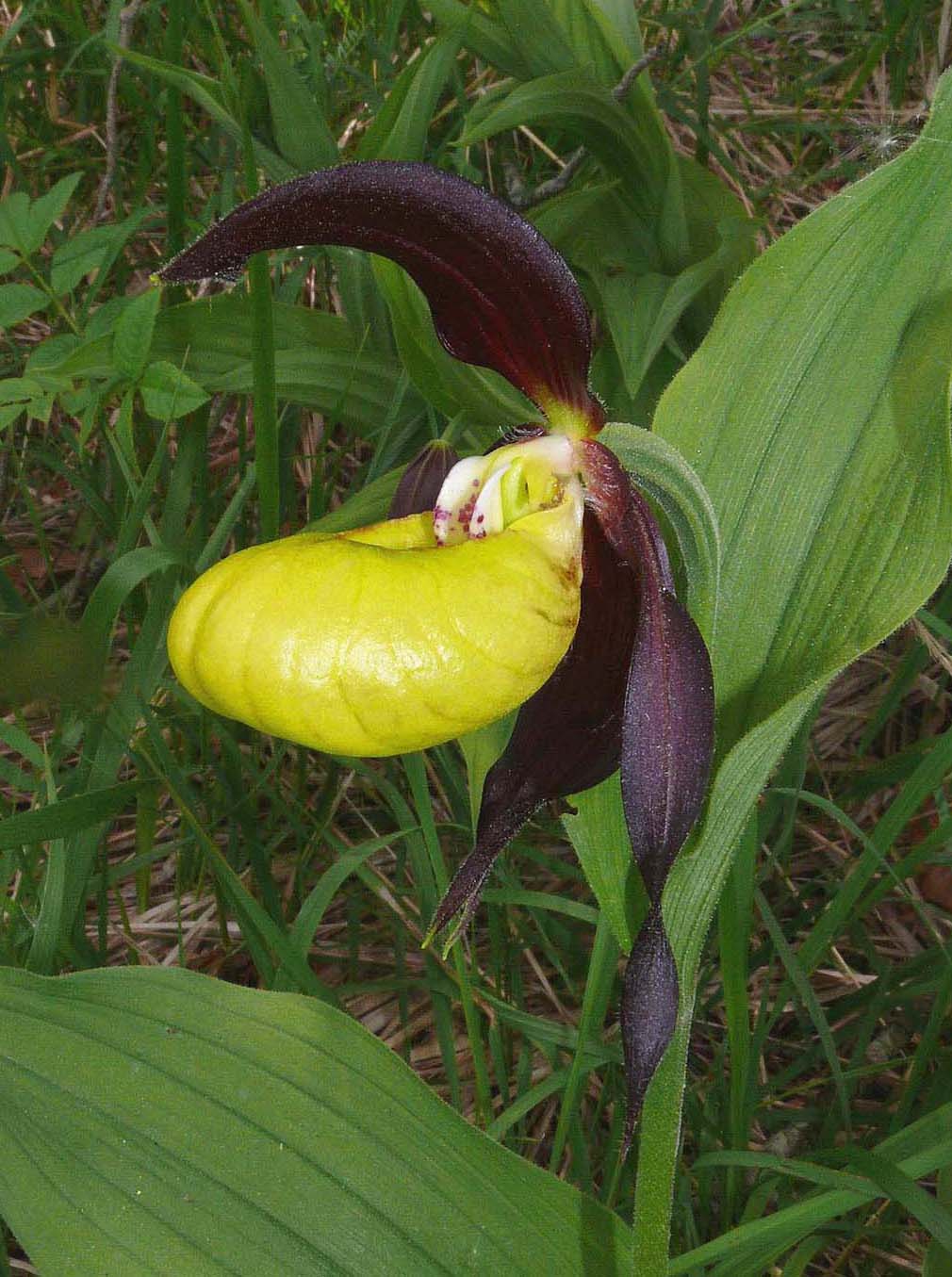
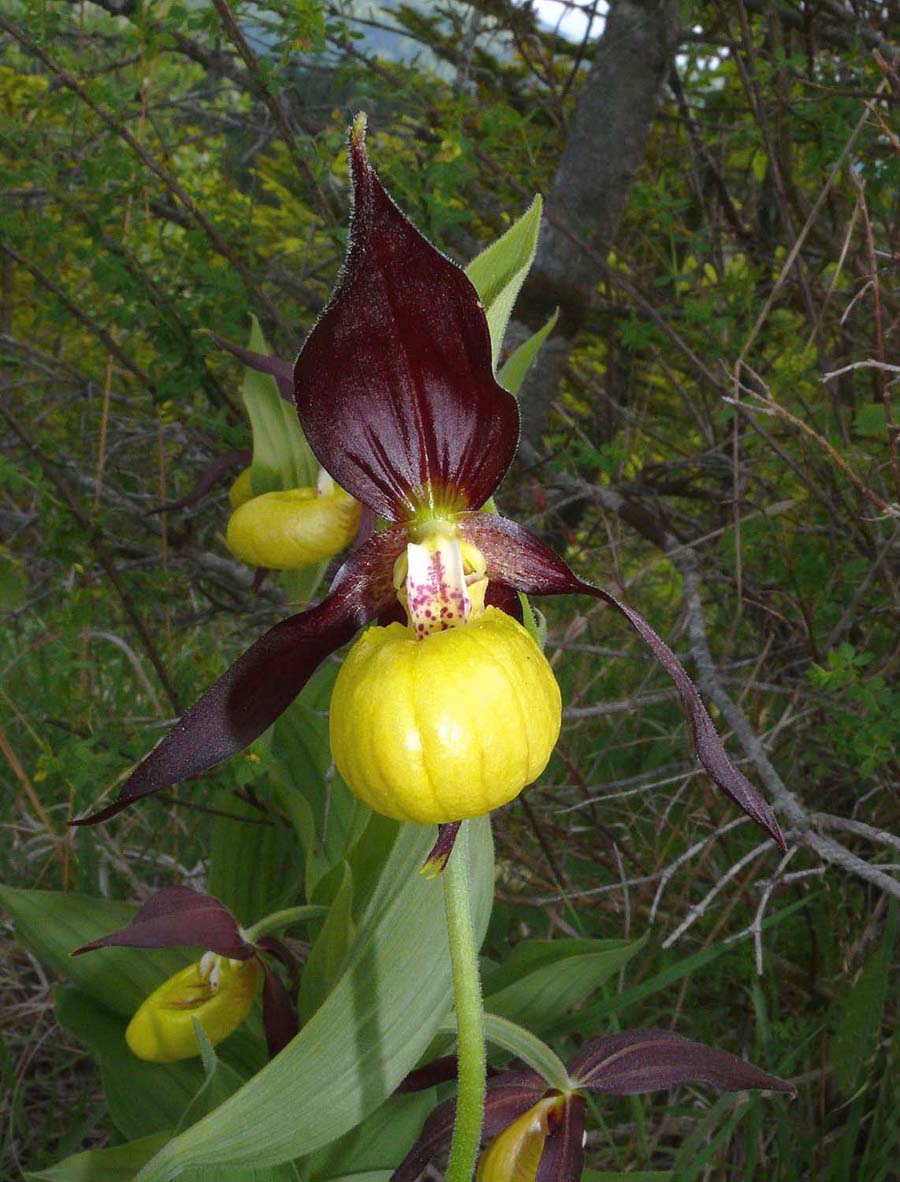
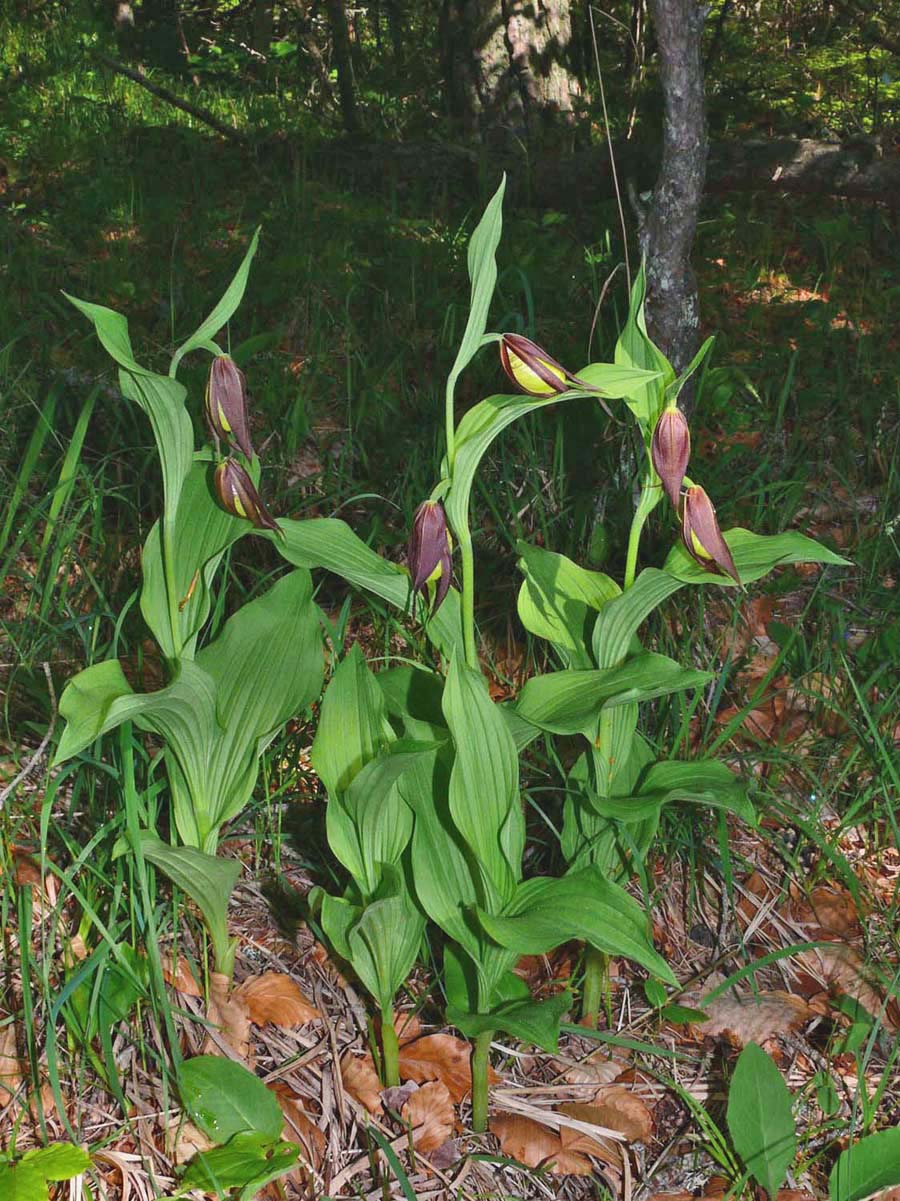
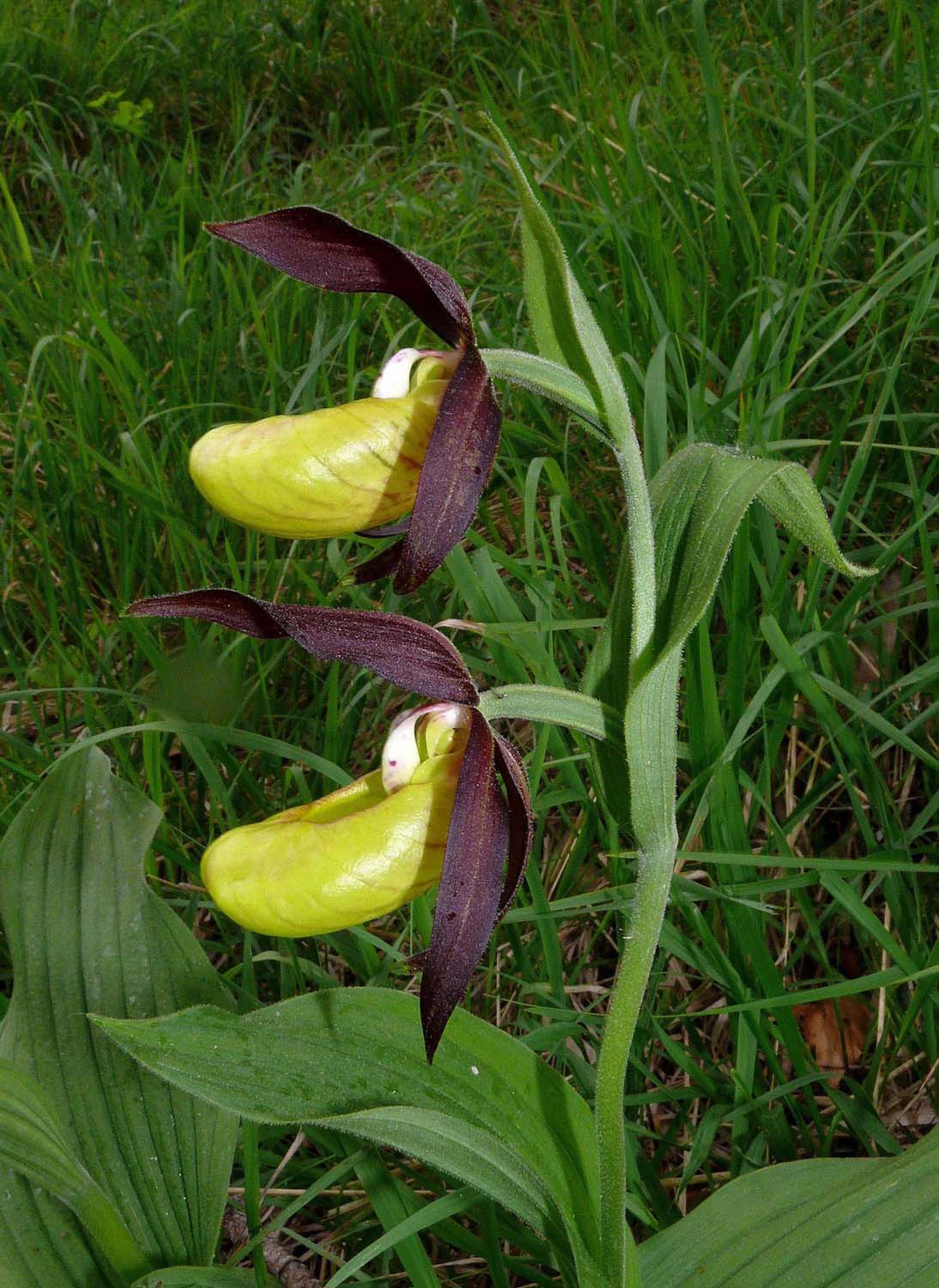
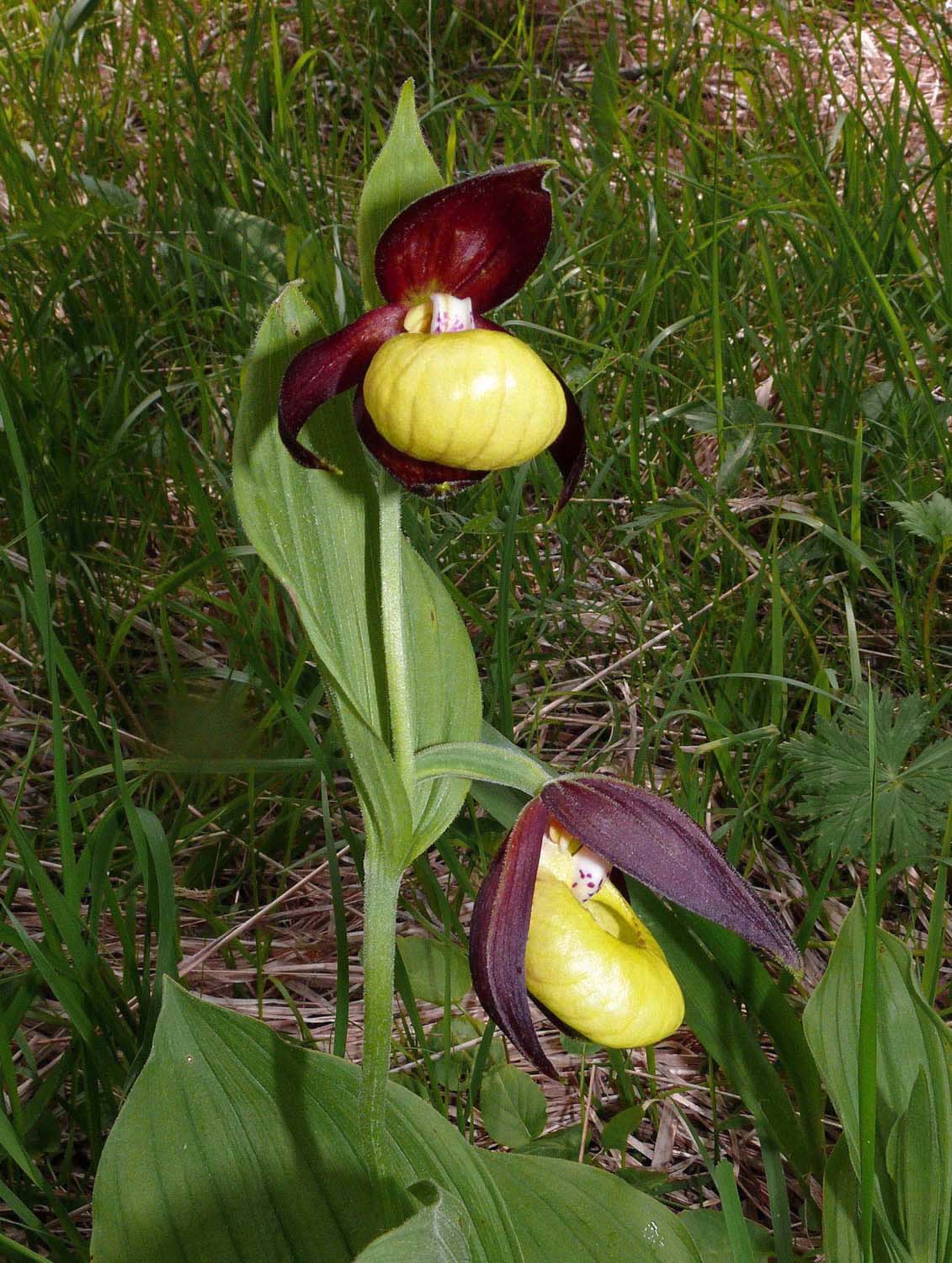
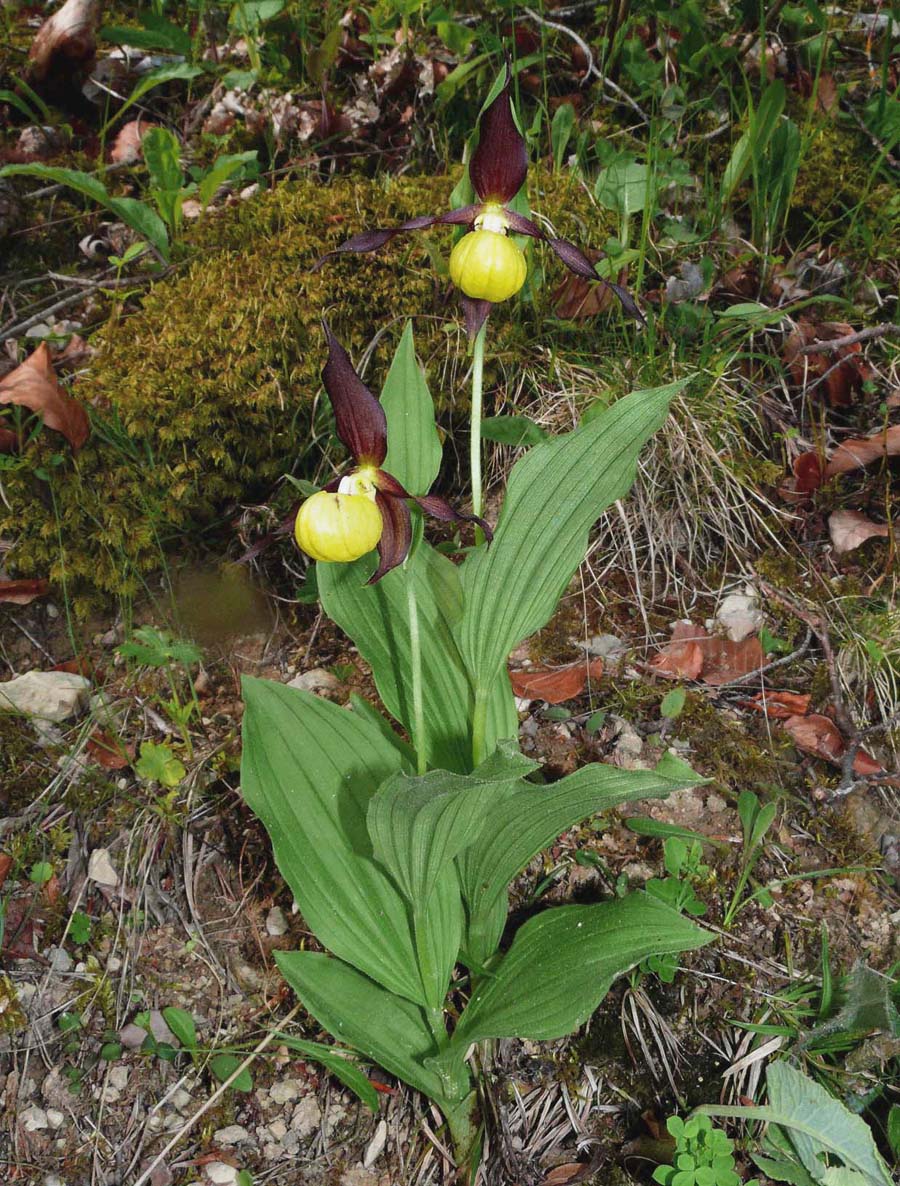
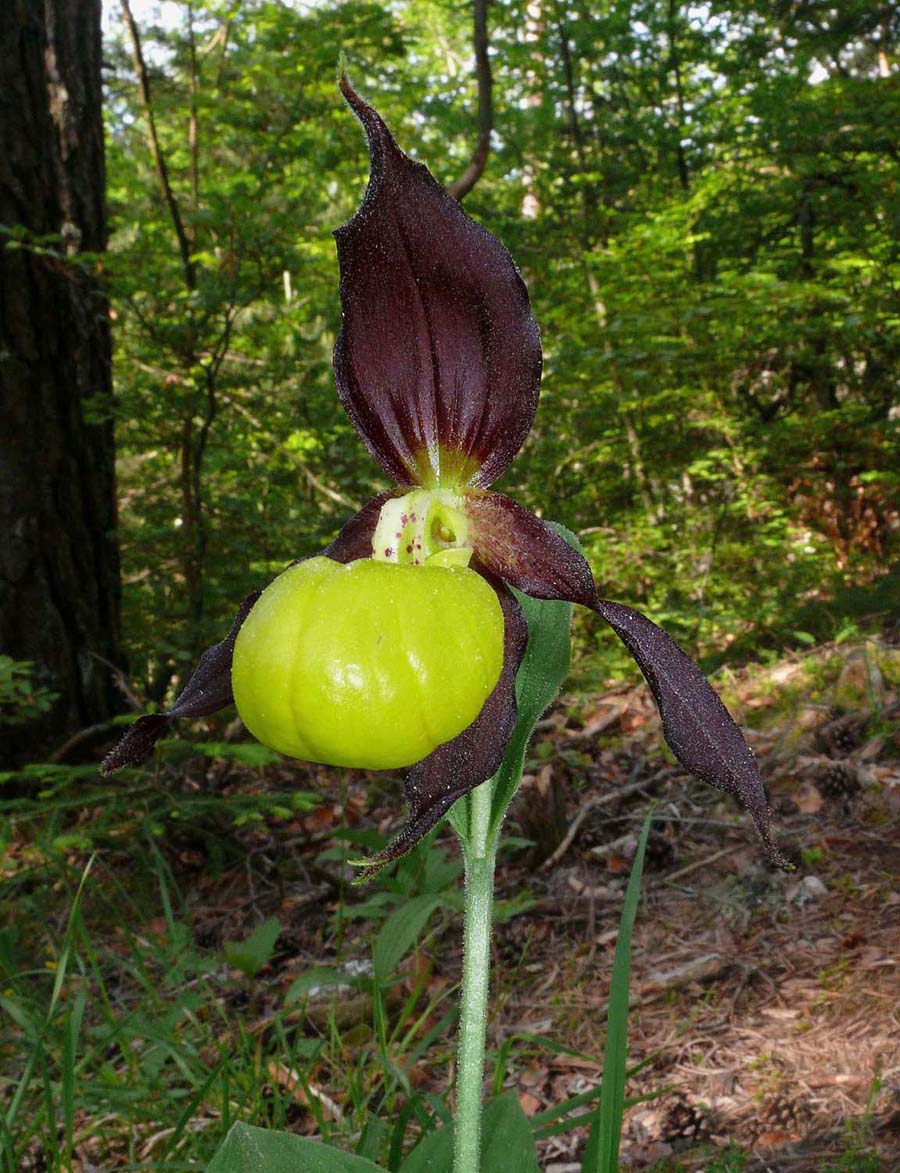
.